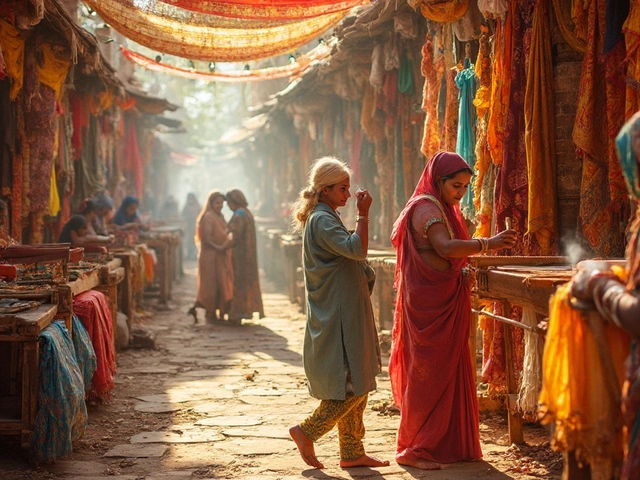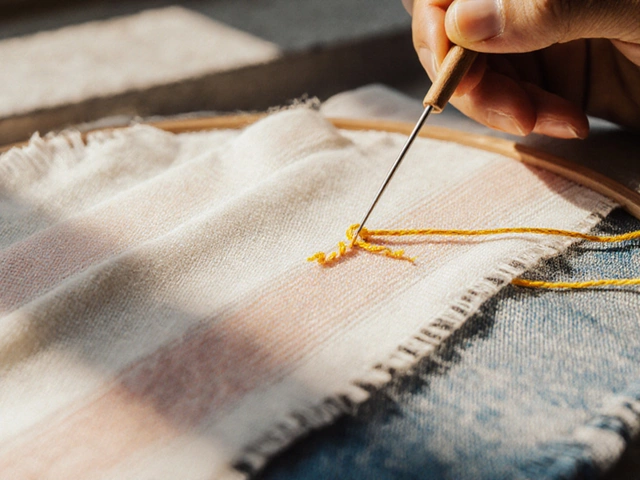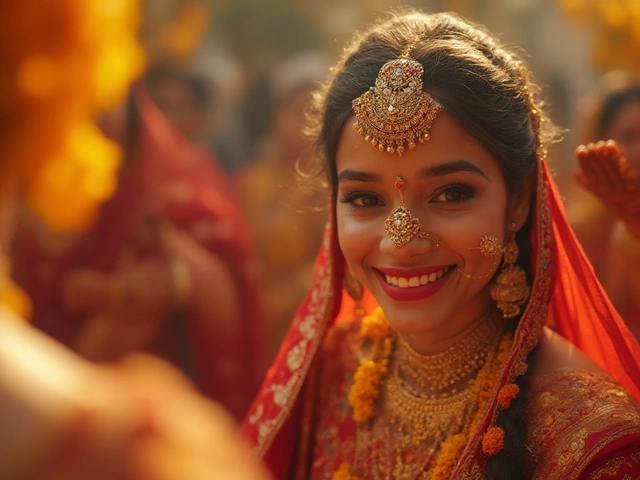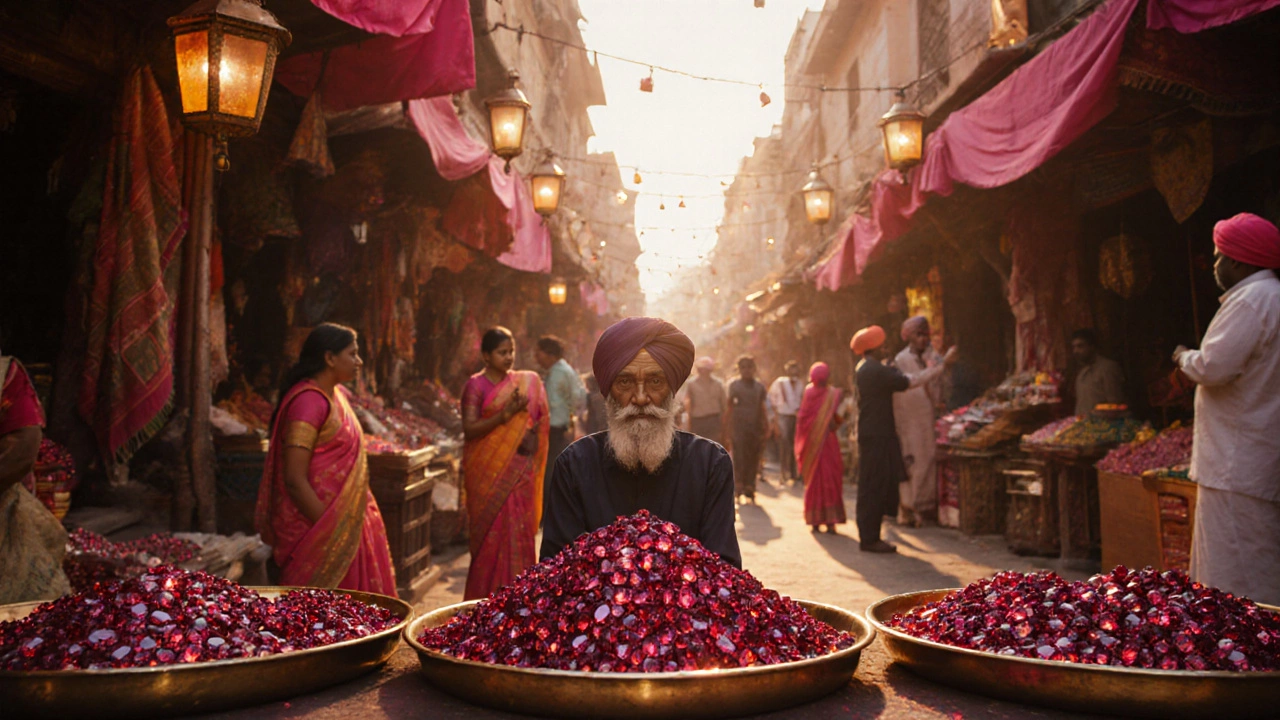
Ruby Value Calculator
Estimate the value of Jaipur rubies based on key quality factors. Prices range from $2,000 to $8,000 USD for a 1-carat ruby in reputable boutiques.
* Prices based on article data (1-carat ruby: $2,000-$8,000 USD)
Key Value Factors
Color: Deep blood-red rubies with slight violet undertones command the highest prices.
Clarity: High-quality rubies often have tiny "silk" inclusions; excessive cloudiness indicates synthetic.
Origin: Jaipur's cutting tradition adds value to rubies sourced from Myanmar/Thailand.
When you think of the Pink City’s glittering bazaars, the first image that pops up isn’t just gold or silver-it’s the deep, fiery glow of a ruby. Jaipur is a historic hub for gemstone trading, and among the many stones that pass through its bustling markets, the ruby stands out as the city’s signature gem. In this guide we’ll unpack why ruby is Jaipur’s claim‑to‑fame, explore the other gems you’ll bump into, and give you practical tips for buying and caring for these beauties, especially when they’re set in traditional temple jewelry.
Why Jaipur Became a Ruby Capital
The story starts in the 16th‑century courts of the Rajput kings. Rajasthan sits on ancient trade routes that linked Central Asia’s ruby mines to Indian royalty. When Maharajas of Jaipur began commissioning ornate Kundan and Meenakari pieces, they needed a stone that could hold its own against gold and intricate enamel work. Ruby’s hardness (9 on the Mohs scale) and vivid red hue made it the perfect match.
Over the centuries, local gem cutters refined the art of shaping rubies into tiny, precise facets that fit the miniature settings of temple jewelry. By the early 1900s, Jaipur’s "Gem Market" (or Gem market) was renowned across India for supplying high‑quality rubies to designers in Delhi, Mumbai, and even overseas.
The Star Gem: Ruby
Ruby isn’t just a pretty red stone; it carries cultural weight. In Hindu mythology, ruby symbolizes the fire god Agni and is believed to bring vitality, courage, and protection. That belief is why many temple necklaces and Mangalsutra designs feature a central ruby pendant-think of it as a protective talisman around the wearer’s heart.
Key attributes of Jaipur ruby:
- Color: Blood‑red to pinkish‑red, often with a slightly violet undertone.
- Hardness: 9 (very resistant to scratches).
- Typical source: Primarily imported from Myanmar and Thailand, then cut locally.
- Popular cuts: Oval, cushion, and the traditional "Sikri" cut used in temple pieces.
When you hold a Jaipur ruby, you’re not just feeling a stone-you’re touching a piece of the city’s heritage.
Other Gems You’ll Find in Jaipur’s Markets
Ruby may steal the spotlight, but Jaipur’s gem market is a kaleidoscope of colors. Here’s a quick rundown of the other stones you’ll often see alongside ruby:
| Gemstone | Typical Color | Hardness (Mohs) | Common Setting in Temple Jewelry |
|---|---|---|---|
| Sapphire | Deep blue, also pink or yellow | 9 | Strategic accent stones in Kundan choker |
| Emerald | Vivid green | 7.5-8 | Inlay work for Meenakari motifs |
| Tourmaline | Pink, green, or watermelon (pink/green) | 7-7.5 | Mini‑palettes in temple earrings |
| Opal | Play‑of‑color (white to black base) | 5.5-6.5 | Occasional centerpiece in bridal Nose pins |
Each of these stones brings a different story, but they all share one thing: they’re cut and set by artisans who have honed their craft in Jaipur for generations.
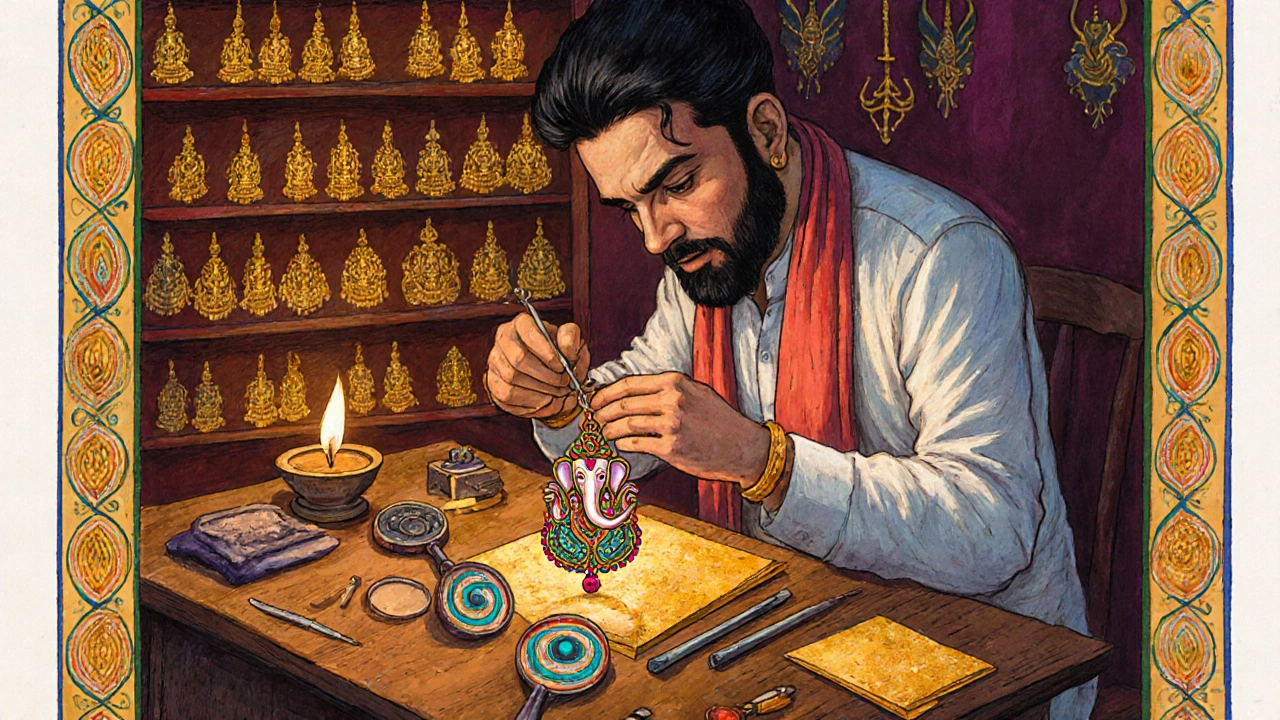
How Ruby Shapes Temple Jewelry Designs
Temple jewelry is more than adornment; it’s a tribute to deities, crafted with symbolic elements. Ruby’s fiery hue is often paired with gold to echo the flames of a sacred ritual. Classic designs include:
- Ganesha pendants: A ruby sits at the center of the elephant’s trunk, representing wisdom and strength.
- Shiva tridents: Three rubies positioned on the prongs symbolize the three aspects of consciousness.
- Peacock motifs: Red ruby eyes bring life to the feathered patterns.
Because ruby can be carved into tiny beads, designers thread them into intricate Moti (pearl) and gold lattices, creating pieces that look both delicate and powerful.
Buying Guide: Spotting Authentic Jaipur Ruby
If you’re hunting for a ruby in Jaipur’s markets, here’s a checklist to keep you from overpaying:
- Check the color depth: Genuine ruby has a uniform, saturated red that doesn’t look washed out. \n
- Look for inclusions: High‑quality rubies often contain tiny "silk"‑like internal features. Excessive cloudiness can indicate a synthetic.
- Ask for certification: Reputable dealers provide a gemological report from labs like GIA or IGI.
- Touch test: Rubies feel cool to the touch initially but warm up quickly-this is a simple way to confirm they’re not glass.
- Consider the setting: In temple jewelry, rubies are mounted into gold with no visible glue. A solid setting means the stone is likely authentic.
Never rush; take a moment to compare a few pieces side by side. The market’s bustle can be overwhelming, but a patient shopper usually walks away with a better deal.
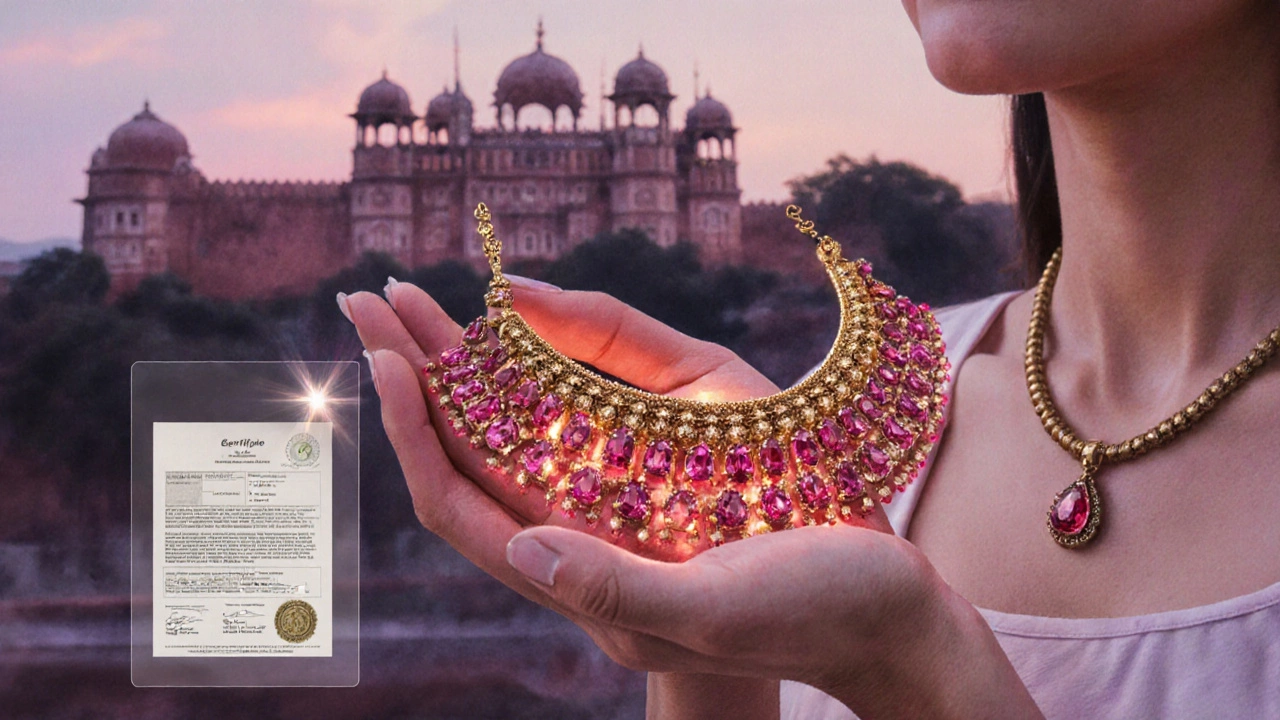
Caring for Ruby Temple Jewelry
Ruby’s hardness makes it relatively low‑maintenance, but the surrounding gold and enamel require gentle handling.
- Cleaning: Use warm, soapy water and a soft brush. Avoid ultrasonic cleaners, as they can loosen delicate enamel work.
- Storage: Keep pieces in a soft pouch, separated from other hard stones that could cause scratches.
- Periodic checks: Have a jeweler inspect prongs and settings every year, especially if the piece is worn daily.
Following these steps ensures your ruby‑laden temple jewelry stays radiant for generations, just like the stories it embodies.
Frequently Asked Questions
What makes Jaipur ruby different from rubies found elsewhere?
Jaipur rubies are typically sourced from Myanmar or Thailand and then expertly cut by local artisans. The city’s centuries‑old cutting tradition gives them a distinctive polish and symmetry that you rarely see in mass‑produced stones.
Are synthetic rubies common in Jaipur markets?
Yes, especially in lower‑priced stalls. Synthetic rubies can look almost identical to natural ones, so always ask for a certification and examine the stone’s inclusions before buying.
Can I wear ruby temple jewelry daily?
You can, but remember that temple pieces often have delicate enamel and intricate gold work. Treat them gently, avoid harsh chemicals, and have the settings checked regularly.
What price range should I expect for a 1‑carat ruby from Jaipur?
Prices vary widely based on color, clarity, and origin. A high‑quality 1‑carat natural ruby can range from $2,000 to $8,000 USD in Jaipur’s reputable boutiques.
Is ruby considered a good investment?
Fine ruby, especially with vivid color and good clarity, retains value over time. When paired with gold in temple jewelry, it can appreciate as both a gemstone and a piece of cultural art.
